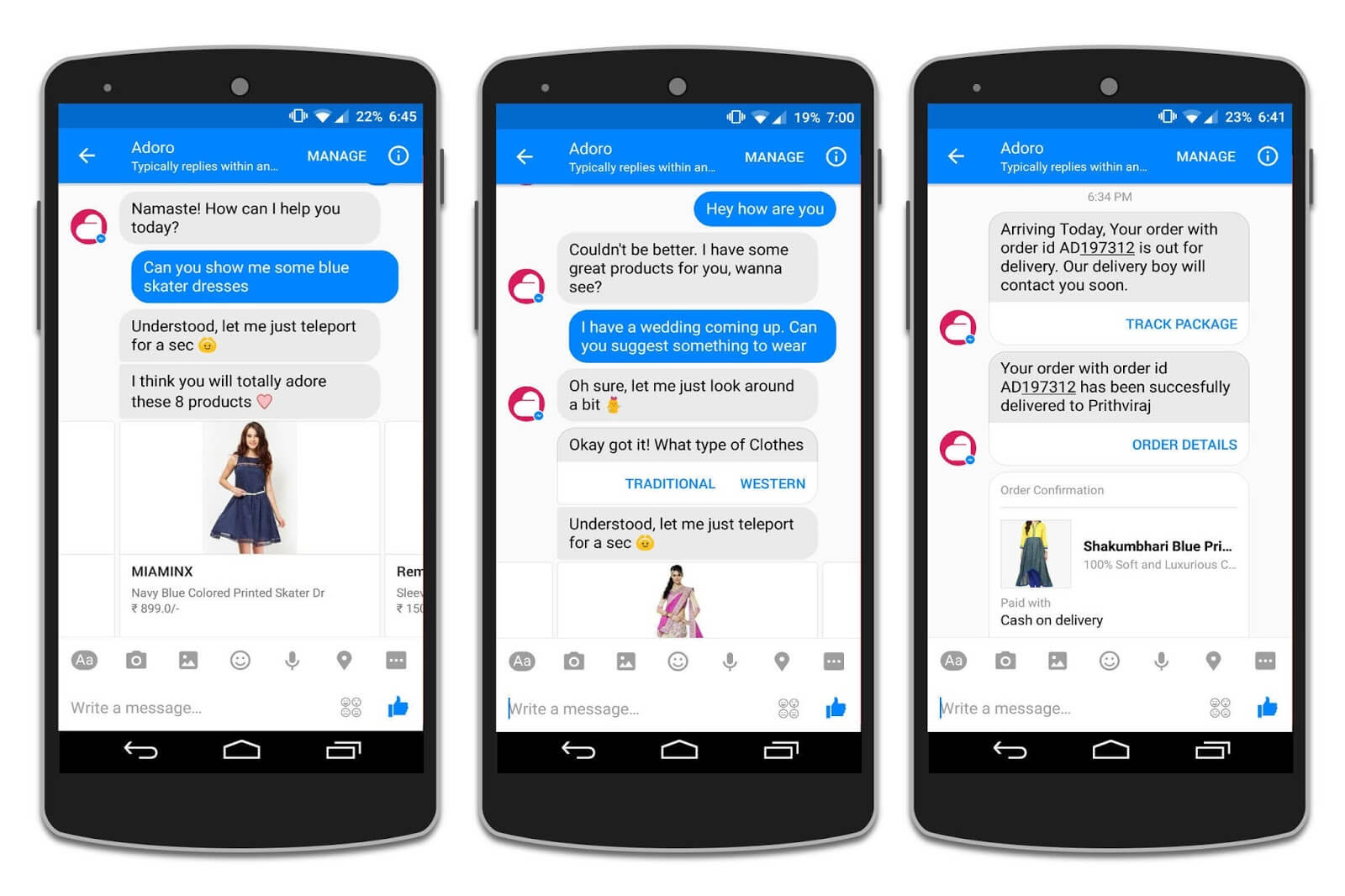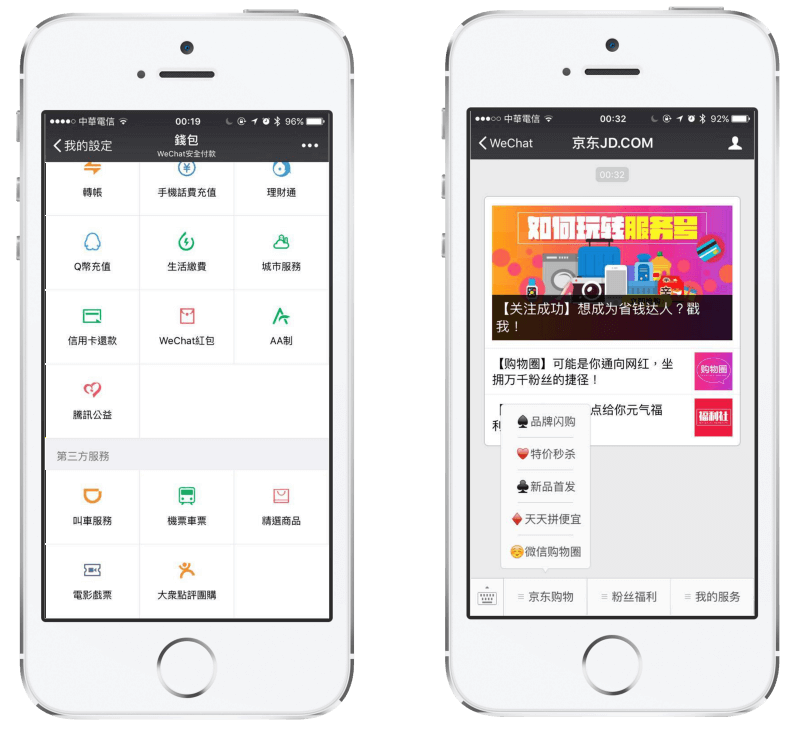A consistent focal point for businesses is how we interact with our customers. Over the years, the way we all approach tackling this has dramatically changed.
Today, marketers need to be everywhere — which is why having a strong omnichannel strategy is necessary to navigate through changing times.
The emerging approach that is permeating Silicon Valley, eCommerce retailers, and startups around the world is conversational commerce.
In this article we break down how this type of communication impacts eCommerce.
What Is Conversational Commerce?
Conversational commerce is when brands use interactive media to communicate with customers and lead them to making a purchase. This isn’t just customer service; it turns the buying journey into a conversation rather than a one-way dialogue of promotional messaging for the customer to accept or reject.
Originally this concept began with social media messengers. According to Statista, both Facebook Messenger and WhatsApp have an active monthly user base of more than one billion people. That means one in every seven people in the world interact with one of these instant messaging apps.
This is a huge opportunity for brands, but even more exciting is the emergence of SMS marketing. About half of consumers have already signed up to receive SMS messages from their favorite brands, and some estimates project that 49 million consumers will agree to receive SMS notifications from brands by the end of this year.
For brands who can do it well, conversational commerce is becoming an integral and powerful part of the customer journey.
How Conversational Commerce Impacts Shoppers
When deciding to make a purchase online, people go through various stages before and after clicking on that checkout button.
There are five distinct steps in the customer purchase journey:
- Need recognition (Awareness): The first and most important stage of the buying process, because every sale begins when a customer becomes aware that they have a need for a product or service.
- Search for information (Research): During this stage, customers want to find out their options.
- Evaluation of alternatives (Consideration): This is the stage when a customer is comparing options to make the best choice.
- Purchasing decision (Conversion): During this stage, buying behavior turns into action – it’s time for the consumer to buy!
- Post-purchase evaluation (Re-purchase): After making a purchase, consumers consider whether it was worth it, whether they will recommend the product/service/brand to others, and what feedback they would give.
The question then becomes, where exactly does a conversation fit into the online purchasing journey?
The answer to that is every single one.
1) Awareness:
Conversational commerce platforms help businesses create a sense of need for their products to potential customers.
An already growing trend in the mobile communication world is using the channel to push relevant content from your brand. Quartz uses this strategy to keep their audience informed.

A quick message from a user via their conversational commerce platform elicits a response from their chatbot with a relevant piece of news.
This seamless connection is a great way for eCommerce stores to let consumers know about the latest products or sales.
2) Research:
Potentially the most influential part of the purchasing journey, customers are always looking to have the widest choice of products available to them.
Adoro, an online fashion network, is changing the way customers research the items they are interested in purchasing.

In response to simple commands such as, “show me some blue dresses,” or “I need something to wear to a wedding,” the Adoro chatbot lists multiple options to choose from.
Gone are the days of countless hours researching products on various websites, and in comes an era in which conversational commerce helps us discover our new favorite eCommerce brand.
3) Consideration:
Once customers have identified what they want and curated a variety of options to choose from, they then consider said options in front of them.
For those looking to leverage conversational commerce at this stage, look no further than to model what JD.com, China’s largest eCommerce retailer, is doing on the WeChat messaging platform.
JD.com has developed a conversational commerce platform on top of WeChat where potential customers have the opportunity to consider a wide variety of items to choose from.

4) Purchasing:
Mobile commerce has grown exponentially over the last few years. Over 54% of online shopping is expected to take place on mobile in 2021, and conversational commerce apps and SMS marketing are a perfect complement to the purchasing stage of the customer journey. Instead of having to send the user to a checkout page on their desktop, shopping bots can provide a seamless buying transition right on your smartphone.
Snap has shoppable stories, for example, with select eCommerce partners such as Lancome and Target in the discovery section of the app, as a way to monetize its daily user base of more than 160 million people.

As you can see from the above graphic, Lancome and Snapchat teamed up to provide users with a stimulating, visual, and creative conversational shopping experience. Visitors to the story are able to swipe up on products that resonate with them, which then redirects them to an embedded eCommerce page within Snap to complete the purchase.
Alternatively, SMS allows brands to create effective win-back, cross-sell, and abandoned cart campaigns that drive fast results.
5) Post-Purchase:
In the last stage of the customer purchasing journey, shoppers evaluate the value of the product they just bought. This entails going over the cost, usability, and quality of the product.
For online businesses, there are many ways to gather this information, but SMS is an effective way to request feedback in the forum that most customers prefer. The vast majority of SMS messages are read within three minutes! There are many SMS strategies to collect UGC, including offering incentives.
Customer content provides tangible information, both positive and negative, about a consumer’s overall experience with your product and company.
Wrapping Up
Companies around the world are investing countless resources into developing conversational commerce channels for their customers. For eCommerce businesses, the choice is clear. Having a comprehensive, robust conversational commerce strategy is imperative for continued success and revenue. And with SMS Marketing tools like Yotpo SMS & Email, it’s easy to get started. Learn more here.




